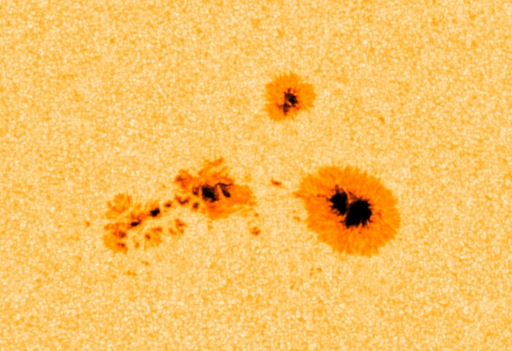11/15/2010 - NRL Press Release 101-10r
Contact: Donna McKinney, (202) 767-2541
Figure 1. Total mass injection in the solar wind by CMEs over the last 14 years as observed by the Space Science Division's LASCO instrument.
Naval Research Laboratory scientists have analyzed and developed the first comprehensive empirical characterization of solar Coronal Mass Ejections (CMEs) size, speed, mass, and kinetic energy. CMEs are the most energetic phenomena in the solar system and the major drivers of geomagnetic storms. They were discovered in 1971 by scientists in the Space Science Division (SSD), Solar Physics Branch. NRL's subsequent sustained basic and applied research on CMEs and their effects on the ionosphere, thermosphere, and the nation's space assets led to a progressively fuller physics-based understanding of space weather phenomena and contributed materially to the space weather forecasting capabilities used by the Air Force Weather Agency to support U.S. warfighters.
To analyze this solar cycle set , NRL researchers have studied the uniquely long-term and comprehensive CME observations obtained by the National Aeronautics and Space Administration (NASA) sponsored and NRL's SSD-developed and -operated Large Angle Spectrometric Coronagraph (LASCO) coronagraph aboard the NASA-European Space Agency (ESA) Solar and Heliospheric Observatory (SOHO) mission .
The continuous operation of the LASCO coronagraph since 1996 has resulted in the longest and most complete database of CME properties ever assembled. The CME properties such as size, speed, mass, and kinetic energy have been measured and catalogued for 13,587 CMEs (as of December 2009) from 130,000 calibrated LASCO images. This unique database was compiled by SSD researchers Drs. Angelos Vourlidas, Russell Howard, and outside collaborators. Their data analysis, soon to be reported in the Astrophysical Journal, provides a robust understanding of the dynamic properties of CMEs and their long-term trends, information important for understanding the geoeffective potential of CMEs and improving space weather forecasting capabilities.
Among the most important results of the study by the research team are: (1) CMEs become fully developed only at solar distances of about 10-15 solar radii which will require a corresponding field of view (FOV) specification for future operational coronagraphs used for space weather forecasting. (2) Not every solar plasma ejection qualifies as a CME. A large number of ejections disappear within the LASCO FOV (30 solar radii) possibly leading to misidentifications with in-situ observations at Earth. (3) There is a surprising and abrupt drop in the average CME mass and CME ejection rate by a factor of 10 within 4 months in mid-2003 (Figure 1). (4) After mid-2003, CMEs exhibit a six-month periodic behavior while their average mass steadily decreases to about 4x less than the previous minimum. When compared with similar, but intermittent, observations in previous solar cycles, the average CME mass seems to exhibit a downward trend beginning in the mid-1970s.
Vourlidas and his team report that there is currently no clear explanation for the periodic variations in CME ejection rate. The discovery of such unexpected regularity in CME behavior has potentially important implications for space weather forecasting and demonstrates the importance of long-term solar activity monitoring.









